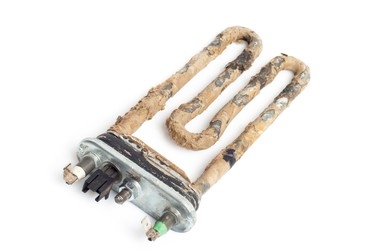When it comes to heating water in your home, an immersion heater plays a crucial role. However, like any other appliance, immersion heaters can encounter issues that prevent them from working properly. In this article, we will explore the common problems faced by immersion heaters and provide a comprehensive troubleshooting guide to help you resolve these issues. So, if you’re dealing with an immersion heater not working, keep reading to find out why and what you can do about it.
What is an Immersion Heater?
An immersion heater is a device used to heat water in an insulated tank. It consists of a heating element and a thermostat, both of which are connected to an electrical power supply. The heating element heats the water, while the thermostat regulates the temperature by turning the heating element on and off as needed. Immersion heaters are commonly found in domestic water tanks and are used to provide hot water for various purposes.

How Does an Immersion Heater Work?
When the immersion heater is turned on, the electrical current flows through the heating element, which converts the electrical energy into heat. This heat is then transferred to the surrounding water, gradually raising its temperature. The thermostat monitors the water temperature and controls the heating element accordingly. When the water reaches the desired temperature, the thermostat shuts off the power to the heating element. Conversely, if the water cools down, the thermostat activates the heating element again to maintain the set temperature.
How do I know if my immersion heater is working?
- Check the power supply: Ensure that the immersion heater is connected to a power source and that the power switch is turned on. If it’s connected to a socket, make sure the socket is functioning properly.
- Observe the indicator light: Many immersion heaters have an indicator light that turns on when the heater is operational. If the light is illuminated, it indicates that the heater is receiving power and should be working.
- Listen for sounds: If the immersion heater is functioning, you may hear a faint humming sound when it’s heating the water. This noise is typically caused by the electric current flowing through the heating element.
- Inspect the heating element: Immersion heaters have a heating element that directly heats the water. Carefully touch the element (when the heater is turned off and cool) to see if it feels warm. If it does, it suggests that the heater is functioning properly.
- Check the water temperature: Turn on the immersion heater and let it run for some time, typically around 30 minutes. Then check the temperature of the water. If the water has become noticeably warmer, it indicates that the immersion heater is working correctly.
- Consult a professional: If you’ve tried the above steps and are still unsure whether your immersion heater is working, it’s advisable to seek assistance from a qualified electrician or a professional familiar with immersion heaters. They can perform a more in-depth inspection and diagnose any potential issues.
Remember, immersion heaters involve electricity, so always prioritize safety. Avoid contact with water when checking the heater, and if you’re uncertain about anything, it’s best to consult a professional to ensure proper handling and prevent accidents. Contact us for any inquiries.
Immersion heater switch light not working?
If the switch light of your immersion heater is not working, it could indicate a potential issue with the switch or the indicator light itself. Here are a few steps you can take to troubleshoot the problem:
- Check the power supply: Ensure that the immersion heater is receiving power. Verify that the power switch is turned on, and if applicable, check the circuit breaker or fuse to ensure it hasn’t tripped or blown.
- Inspect the indicator light: Carefully examine the indicator light to see if it appears damaged, loose, or disconnected. If possible, gently press or wiggle the light to ensure it’s properly seated in its socket.
- Replace the indicator light: If the indicator light appears faulty or doesn’t illuminate even after checking the power supply, you may need to replace it. Consult the manufacturer’s instructions or seek the assistance of a professional to ensure you choose the correct replacement light and properly install it.
- Check the switch: If the power supply and indicator light are functioning correctly, the issue might lie with the switch itself. Use a multimeter to test the switch for continuity or consult an electrician to examine and potentially replace the switch if necessary.
- Seek professional assistance: If you’re uncomfortable or unsure about troubleshooting electrical components, it’s always recommended to consult a qualified electrician. They have the expertise to diagnose and resolve electrical issues safely.
Remember, electrical work can be hazardous, so prioritize your safety and avoid handling any electrical components if you’re uncertain. It’s best to seek professional help if you’re uncomfortable or unsure about the troubleshooting process. Contact us for any inquiries.
Why immersion heater not heating water enough?
If your immersion heater is not heating the water to a sufficient temperature, here are some possible reasons and troubleshooting steps you can take:
- Thermostat setting: Check the thermostat setting on your immersion heater. Ensure it is set to the desired temperature. Adjust the thermostat if necessary and wait for some time to see if the water temperature improves.
- Insufficient time: Immersion heaters may take some time to heat the water adequately, especially if the water volume is large. Allow the heater to run for a longer duration and check if the water temperature increases to the desired level.
- Sediment buildup: Over time, sediment can accumulate on the heating element, affecting its efficiency. If your immersion heater has been in use for a while, there may be a layer of sediment on the element. Consider cleaning the heating element following the manufacturer’s instructions or seek professional help to remove any buildup.
- Faulty heating element: The heating element itself could be faulty or damaged. If you’ve tried adjusting the thermostat and giving it enough time but the water still doesn’t reach the desired temperature, the heating element might need to be replaced. Contact a professional or the manufacturer for assistance.
- Insulation issues: Check if the immersion heater is properly insulated. Insulation helps retain heat and prevent energy loss. If there are any gaps or insulation is worn out, it can affect the heater’s efficiency. Ensure the insulation is intact or consider adding additional insulation to the water tank if needed.
- Electrical issues: Verify that the immersion heater is receiving adequate electrical power. Check the circuit breaker or fuse associated with the heater to ensure it hasn’t tripped or blown. If you suspect an electrical problem, consult a professional electrician to investigate and resolve any issues.
- Scale buildup: In areas with hard water, scale buildup can occur on the heating element, reducing its effectiveness. Consider descaling the immersion heater using an appropriate descaling solution or seek professional help to remove any scale deposits.
If you have tried the troubleshooting steps above and the immersion heater still doesn’t heat the water adequately, it’s advisable to contact a professional electrician or the manufacturer for further assistance. They can diagnose the issue more accurately and provide the necessary repairs or replacements.
Common Issues with Immersion Heaters
There are several reasons why an immersion heater may stop working or fail to heat water adequately. Here are some common issues:
- Faulty Thermostat: A faulty thermostat can cause the immersion heater to malfunction. It may fail to regulate the temperature properly or not turn on the heating element at all. In such cases, troubleshooting involves checking the thermostat and resetting it if necessary. If the thermostat is burned or damaged, it should be replaced by a specialist.
- Damaged Elements: The heating element in an immersion heater can become damaged over time. This can result in reduced heating efficiency or complete failure to heat the water. Professional assistance is recommended for inspecting and replacing damaged elements.
- Limescale Buildup: Limescale, a mineral deposit formed by hard water, can accumulate on the heating element and reduce its effectiveness. To prevent limescale buildup, consider using a water softener or filtered water. Flushing out the scale with high-pressure water can also help maintain the efficiency of the immersion heater.
- Insulation Breakdown: If the insulation surrounding the heating element deteriorates, it can lead to electrical issues and pose safety risks. In case of insulation breakdown, it’s crucial to seek expert attention and have the internal components of the immersion heater inspected and serviced by a heating expert.
- Wiring Problems: Immersion heaters can face issues with wiring connections, such as loose or damaged wires. These issues can disrupt the electrical flow and cause the heater to malfunction. If you suspect a wiring problem, it’s advisable to seek professional assistance for inspection and repairs.
Troubleshooting Guide for Immersion Heaters
If you’re experiencing problems with your immersion heater, you can follow these steps to troubleshoot the issues:
- Check the Circuit Breaker: Ensure that the circuit breaker connected to the immersion heater is in the “on” position. If it has tripped, reset it and observe if the heater starts working again.
- Reset or Replace the Thermostat: If the thermostat is not functioning correctly, try resetting it according to the manufacturer’s instructions. If the problem persists, consult a specialist to reset or replace the faulty thermostat.
- Inspect for Damaged Elements: Examine the heating elements for signs of damage or deterioration. If you notice any issues, it’s best to seek professional assistance for inspection and replacement.
- Address Limescale Buildup: If limescale buildup is suspected, consider using a water softener or filtered water to prevent further deposits. Flushing out the scale with high-pressure water can also help improve the heater’s performance.
- Check for Wiring Problems: Ensure that the wiring connections are secure and undamaged. If you suspect a wiring problem, it’s advisable to seek professional help for inspection and repairs.
- Seek Professional Assistance: If the troubleshooting steps don’t resolve the issue, or if you’re unsure about performing them yourself, it’s recommended to seek professional help from a qualified electrician or heating expert. They can diagnose the problem accurately and provide the necessary repairs or replacements.
FAQ: Frequently Asked Questions
- How can I reset a faulty thermostat on my immersion heater? To reset a faulty thermostat, follow the manufacturer’s instructions or consult a specialist for guidance.
- What should I do if my immersion heater elements are damaged? If the heating elements are damaged, it’s best to seek professional assistance for inspection and replacement.
- How can I prevent limescale buildup in my immersion heater? To prevent limescale buildup, consider using a water softener or filtered water. Flushing out the scale with high-pressure water can also help maintain the efficiency of the heater.
- Is it safe to disassemble an immersion heater without expertise? Disassembling an immersion heater without expertise is unsafe. It’s recommended to have a heating expert inspect and service the internal components.
- What are the potential causes of lukewarm water from an immersion heater? Lukewarm water from an immersion heater can be caused by factors such as turning the thermostat to the max, loose connections, inadequate sizing, hard water, cheap copper material, or depleting the tank quickly by using hot water for tasks like washing up.
- Can I bypass the thermostat in my immersion heater? Bypassing the thermostat in an immersion heater is possible but not advised without appropriate skills and knowledge. It’s best to seek professional help in such cases.
Fina words
An immersion heater is a vital appliance for heating water in domestic settings. However, when it malfunctions or stops working, it can be frustrating. By understanding the common issues and following the troubleshooting guide provided in this article, you can take the necessary steps to resolve problems with your immersion heater. Remember to prioritize safety and seek professional assistance when needed. With proper care and maintenance, your immersion heater will continue to provide you with hot water efficiently.


